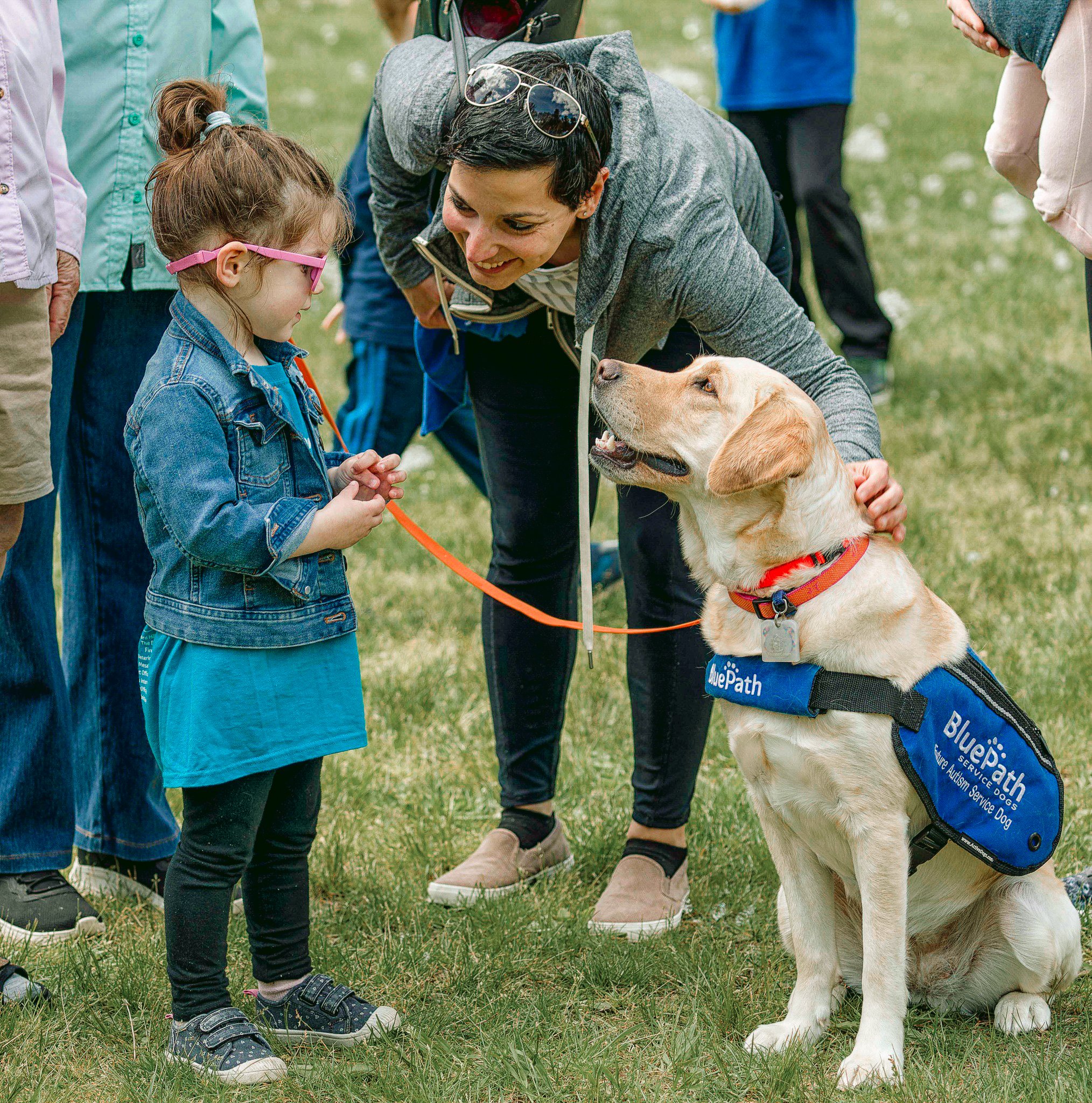
WHAT YOU WILL NEED
CLICKER
Do you need it? No, but it can speed up learning if used correctly. If you want to geek out on training, this is for you. If not, skip it.
TREAT POUCH
A treat pouch is a great way to make sure you have treats when you need them. Leave it next to your leash and you will be set!
LEASH
A good 4-6ft leash is a staple in dog training. Leather leashes are much gentler on the hands than most other materials.
TRAINING TREATS
Bocce’s Bakery Training Bites are quite small, but suitable for any sized dog. Generally these do not need to be broken into smaller pieces.
NOTE: All products have affiliate links, so I earn a small commission on each purchase. Happy training!
OVERVIEW
Teaching your puppy not to jump on people during greetings is a long, sometimes frustrating process. Dogs are naturally social creatures who want to greet us like they do other dogs—by sniffing our faces. Unfortunately, that’s not exactly the kind of hello we’re looking for. Because jumping is self-rewarding (it feels good to them), the usual advice to “ignore your dog” or “turn your back” often doesn’t work. They’re still getting their kicks just by jumping, even if you’re not paying attention.
To get started, make sure your dog is solid with the “sit” and “stay” commands. Even though I don’t typically use “stay” when working on polite greetings, the self-control your dog develops from practicing it is key.
Getting “Buy In”
One of the biggest challenges is getting the person your dog is jumping on to cooperate. You’ve probably heard them say, “Oh, I don’t mind!” as they let your puppy bounce all over them. But if you want to teach polite greetings, you’ll need to get people on board. Yes, it’s frustrating to have to convince strangers (and sometimes friends and family) that it’s important for your dog to behave. But without their cooperation, most people will ignore your requests and pet your dog anyway.
To get people to “buy in,” borrow a trick from sales: tie them into your goals. When they understand why it’s important, they’re more likely to help out. Try saying things like, “We visit my 90-year-old grandmother a lot, and I’m worried my dog might knock her over,” or “My dog’s been jumping on my kids, and now they’re scared of the puppy,” or “My puppy’s training to be a therapy dog, but they can’t do that if they jump on people.” For those raising a puppy to be a service dog try, “This dog’s in training to be a service dog, and they won’t make the cut if they can’t greet people politely.” And please, if your dog isn’t actually a service dog or in training to be one, don’t use that excuse. Fake service dogs cause real problems for those who genuinely need them.
The key to teaching polite greetings is to make the experience more about you than the other person. If you suddenly become the most interesting thing in the room by dishing out treats when someone new approaches, your puppy will start to look to you instead of jumping on the other person.
Manage the other person’s expectations. Most people expect a dog to sniff them before they pet it, but let them know that if all goes well, your dog might not acknowledge them at all and will stay focused on you. They can still pet your puppy without a pre-sniff, and if your puppy stays calm, the other person is likely to remain calm too—bonus points for not getting your dog too excited.
Teach the Behavior
Start by having your dog on a leash and ask them to “sit.” Once they’re seated, it’s treat time! Hold a handful of treats and let your dog nibble on them while the person approaches and pets them. If your dog gets up, ask the person to stop petting and step back. Then, re-cue the “sit” and start the treat game again. Repeat as necessary.
As your dog gets more practice, they’ll likely start looking to you for treats when someone approaches. That’s your cue to start gradually reducing the amount of food you use. Progress will be slow, especially as your puppy matures, and there may be setbacks, but keep at it—this is a tough behavior for most dogs to master.
If your puppy does jump on someone, say “off” and use the leash to gently guide them back to the ground.
What If Your Puppy Is Jumping on YOU?
If your puppy is jumping on you, you’ll need a different approach. Any adult in the family can use this technique. If you see your puppy coming and know they’re likely to jump, start walking quickly and purposefully toward them. If they jump, keep walking—this should throw them off balance, which they won’t like. Remember, backing up invites them into your space; moving forward discourages it.
If your dog jumps on you while you’re standing still, don’t back up. Instead, move forward into their space. It might take several steps to get them off, and it will feel awkward at first, but stick with it. Once all four paws are on the ground, you can start interacting with them again.
This process takes time and consistency. You won’t see results overnight. Young puppies don’t have the self-control to get this right immediately—it will come with practice and maturity.




